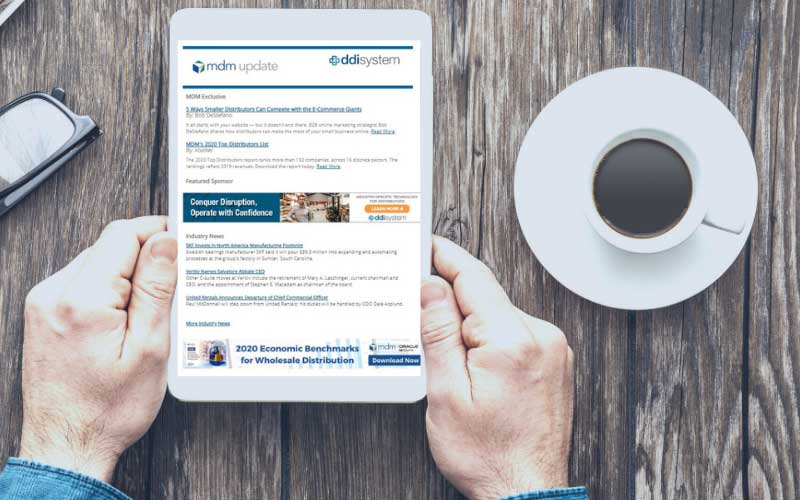To continue reading this article you must be a paid subscriber.
Subscribe to MDMAlready Subscribed? Click here to log-in | Forgot your password?
U.S. manufacturers are beginning to bring back production from foreign countries as they take a holistic look at the costs and problems associated with outsourcing. About a year ago I was visiting a manufacturing plant that manufactured die-cutting presses. The CEO told me that most of the presses were manufactured in Taiwan, but there were a lot of problems trying to communicate the requirements, which resulted in quality problems.
Already Subscribed? Click here to log-in | Forgot your password?
Read the latest articles and see your reports.
The MDM update newsletter is your best source for news and trends in the wholesale distribution industry.
Wholesale distribution news and trends delivered right to your inbox.
Sign-up for our free newsletter and get:

Join other distribution executives who use MDM Premium to optimize their business. Our insights and analysis help you enter the right new markets, turbocharge your sales and marketing efforts, identify business partners that help you scale, and stay ahead of your competitors.
By providing your email, you agree to receive announcements from us and our partners for our newsletter, events, surveys, and partner resources per MDM Terms & Conditions. You can withdraw consent at any time.